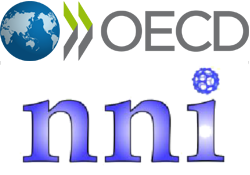
As the U.S. government addresses the budget allocation for the National Nanotechnology Initiative (NNI) each year, the questions regarding return on investment have become more formidable over the past few years. Complimenting this has been the emerging theme and recommendations by the Presidential Council of Advisors on Science and Technology (PCAST) in their report on the fourth assessment of the NNI emphasizing increased support of nanomanufacturing and nanotechnology commercialization as part of the NNI investment. As federal agencies are now enacting these recommendations within their respective nanotechnology programs, the overarching question of how to assess the economic impact of nanotechnology remains a central point of discussion both within this country and around the globe. The need for such an assessment evolves from the perspective that governments have a fiscal and social responsibility to ensure that investment of public funds and resources are used wisely and cost-effectively in support of social, economic, and scientific objectives. Through significant public and private investments in nanotechnology during the past decade, the field of nanotechnology has matured to the point where significant potential has been demonstrated to impact a range of economic and societal sectors, including medicine, quality of life, manufacturing, and energy. In order to continue the public investment in promoting the responsible development of nanotechnology will require quantitative data on the economic impact of nanotechnology to guide further investment and policy decisions. The challenge here is that very few widely accepted economic impact assessments have been conducted, and many questions remain regarding the best methodologies, accuracy, and true meaning of such assessments.
With the recently released report from the international Symposium on Assessing the Economic Impact of Nanotechnology, held in March 2012 sponsored by the Organization for Economic Cooperation and Development (OECD) and the United States NNI, and hosted by the American Association for the Advancement of Science (AAAS). The symposium, which brought together participants from the public and private sectors with expertise all along the nanotechnology value chain – scientists, engineers, policy analysts, private investors, technology leaders, and the general public – from both OECD and emerging economies, provided the conclusion that the technology is sufficiently mature to justify the collecting of data to support the performance of economic impact assessments. Reading through the report provides some key insights into the challenges associated with such an endeavor, as well as discussion of methodologies presently used, and the meaning of the information produced.
As the report provides some of the reasoning behind this conclusion and identifies some of the potential challenges involved, a broader perspective emerges as well that provides a statistical glimpse into how research funds are spent, the importance of fundamental science, the need for standards in definitions and terminology, and the value of qualitative versus quantitative information, and how the information will ultimately be used to guide policies and decision making processes, both within the federal government and on a global basis. The NNN encourages stakeholders to obtain a copy of the report as it provides both insight into the methods and challenges, but can also act as a guide for our engagement within the framework of nanotechnology research and transition to nanomanufacturing.
